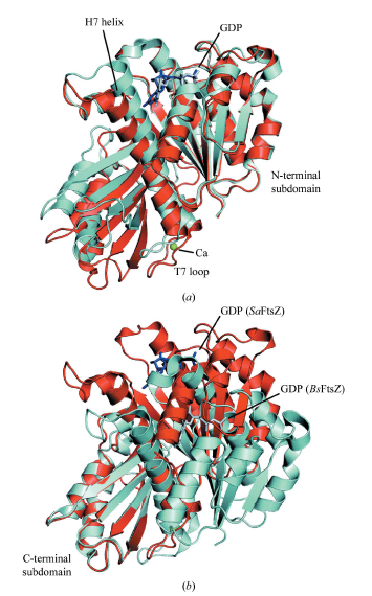

Left: Structural comparisons between GDP-form SaFtsZ and GDP-form BsFtsZ. The structures in (a) and (b) are shown after superposition of the N-terminal subdomain (residues 13-171) and the C-terminal subdomain (residues 223-310), respectively. GDP-form SaFtsZ and GDP-form BsFtsZ are coloured red and cyan, respectively. GDPs bound to SaFtsZ and BsFtsZ are coloured blue and grey, respectively.
Right:Crystal packing of SaFtsZf-GDP (molecule A). An asymmetric molecule and symmetry-related molecules are coloured red and grey, respectively. GDP and calcium ions are represented as blue sticks and green spheres, respectively.